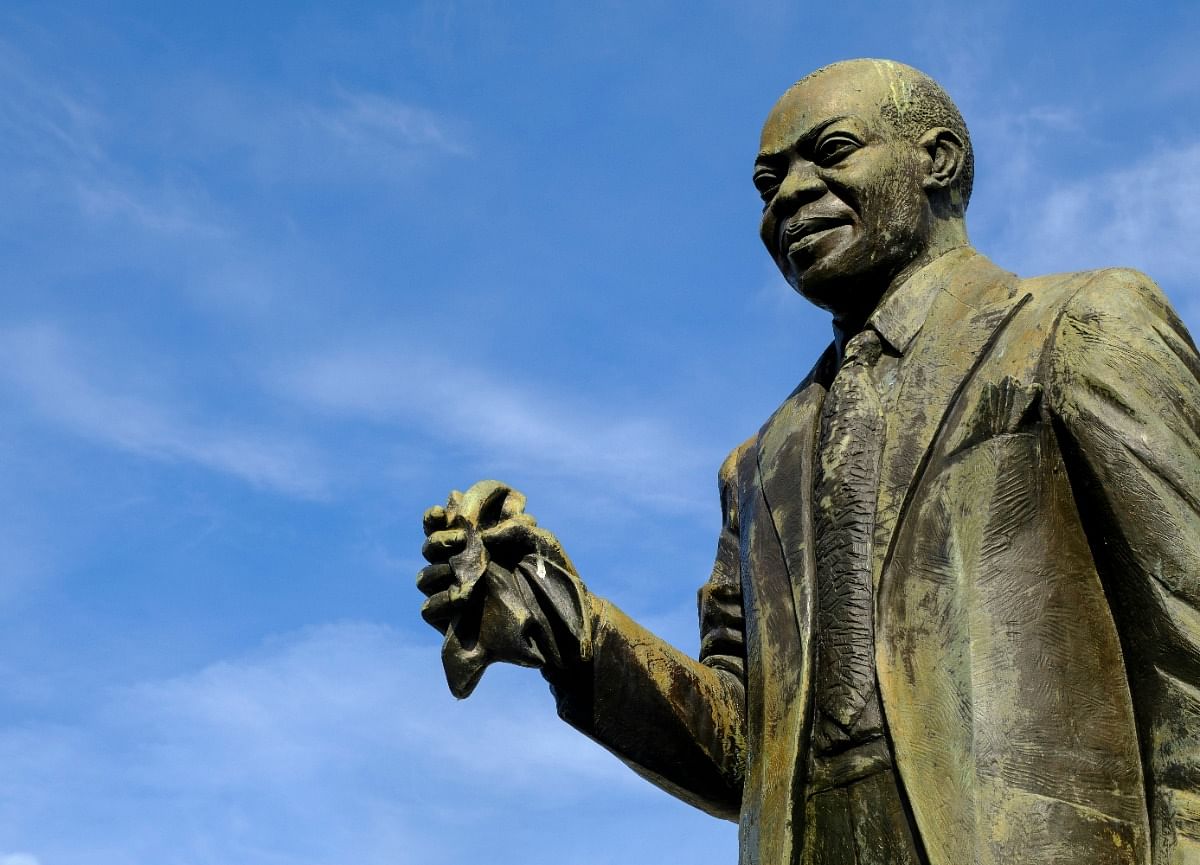
Tremé Tour: The Heart of Culture in New Orleans
Experience the Culture of Treme in New Orleans

In New Orleans, while the French Quarter gets most of the attention from tourists, the Tremé neighborhood holds the true heartbeat of the city’s culture. It is the oldest African American neighborhood in the United States, the birthplace of jazz, and a cornerstone of black resilience and community in New Orleans. If you want to understand the roots of New Orleans music, Mardi Gras Indians, second line parades, and civil rights activism, you need to take a walk through Tremé.
Where Is Tremé?
Tremé is located just north of the French Quarter, across Rampart Street. While it’s close to the bustling nightlife of Bourbon Street, it feels like a world apart. Tremé is quieter, more residential, and incredibly rich in history. It’s where locals gather for Sunday second lines, where brass bands play in the streets, and where the spirit of New Orleans feels most authentic.
The neighborhood stretches roughly from Rampart Street to North Broad and from Canal Street to St. Bernard Avenue. It includes iconic landmarks such as Congo Square, Louis Armstrong Park, and St. Augustine Church.
A Brief History of Tremé
Tremé’s story begins in the late 1700s when free people of color, many of them of French and Spanish descent, settled in the area. After the Haitian Revolution, many refugees, both white and black, came to New Orleans and further shaped the neighborhood. By the early 1800s, Tremé had become a thriving community of free black citizens, artists, musicians, and craftsmen.
Unlike many American cities of the time, New Orleans had a large population of free people of color before the Civil War. Tremé was one of the few places where black-owned businesses and homes were common. It was a neighborhood built by black excellence long before emancipation.
Through the Reconstruction Era, Jim Crow segregation, and the Civil Rights Movement, Tremé remained a symbol of pride and perseverance for black New Orleanians. Today, it continues to be a center of cultural heritage and activism.
What to Expect on the French Quarter Phantoms Tremé Tour
This isn’t your average tour with dry facts and robotic guides. The Tremé tour with French Quarter Phantoms is personal, heartfelt, and rich with local knowledge. Your guide is often a New Orleans native or longtime resident who deeply understands what makes Tremé so vital to the city’s identity.
Highlights of the tour include:
Congo Square: One of the most emotionally powerful stops on the tour, Congo Square is where enslaved Africans were allowed to gather on Sundays during the 18th and 19th centuries. They danced, played drums, and kept their cultural traditions alive in the face of oppression. This square is considered the spiritual birthplace of jazz and the reason why New Orleans developed such a strong musical identity.
Your guide will explain the rules that governed Congo Square gatherings, how they changed over time, and why the music played here was a revolutionary act of cultural resistance.
Louis Armstrong Park: Named after one of the most famous New Orleanians, this park honors the legacy of jazz and its early pioneers. While the park itself is relatively modern, the land it occupies holds centuries of history. In addition to Congo Square, the park contains sculptures, plaques, and green spaces that celebrate the city’s musical heritage.
The tour often pauses near the Mahalia Jackson Theater and other key points within the park, offering stories about how these locations played a role in the community’s cultural and political life.
St. Augustine Church: Founded in 1841, this church was one of the first to allow both free people of color and enslaved individuals to worship together. Its pews were open to everyone. The “Tomb of the Unknown Slave” outside the church serves as a solemn memorial to the countless unnamed individuals who were forced into bondage.
St. Augustine is still active today and remains a gathering place for the Tremé community. It's a poignant symbol of how faith and justice have long intertwined in this neighborhood.
Architecture of Tremé: Tremé is full of Creole cottages, shotgun houses, and other unique styles that make New Orleans architecture so distinct. The tour offers insights into how these homes were built, who lived in them, and why they remain vital to the neighborhood’s identity.
Many homes are brightly colored and meticulously cared for, even after Hurricane Katrina threatened the future of the area. These structures are more than just buildings. They represent stories of families, culture, and legacy.
Storytelling and Music History: You’ll hear stories about jazz greats like Jelly Roll Morton, Sidney Bechet, and of course, Louis Armstrong. These weren’t just musical celebrities. They were sons of New Orleans who carried the voice of Tremé to the world.
Expect your guide to break into song, share a few laughs, and maybe even get you dancing in the street. It’s all part of the experience. After all, you’re in a place where music isn’t just background noise. It’s how people speak, mourn, celebrate, and resist.
Second Lines and Mardi Gras Indians: If you're lucky, your tour might coincide with a second line parade. These lively processions are led by brass bands and followed by dancing locals waving handkerchiefs and twirling parasols. They often start as funeral processions but evolve into joyful celebrations of life. Tremé is one of the main hubs for these events.
You'll also learn about the Mardi Gras Indians, a centuries-old tradition rooted in mutual respect between African Americans and Native Americans. Their elaborate hand-sewn suits, parades, and chants are unlike anything else in the world. Tremé is home to several of the oldest and most respected Mardi Gras Indian tribes.
The tour breaks down the meanings behind the traditions, the rivalries, the craftsmanship, and why Mardi Gras in Tremé is about more than beads and parades. It’s about identity, artistry, and honor.
Tremé and the Civil Rights Movement: The tour also covers Tremé’s role in civil rights activism. In the 1950s and 60s, many leaders and organizations based their efforts in this neighborhood. Residents fought for school integration, housing rights, and equal employment opportunities.
You’ll hear about individuals who challenged segregation long before the national spotlight turned toward the South. The legacy of those fights still lives in the neighborhood’s ongoing push against gentrification and displacement.
Hurricane Katrina and Tremé’s Resilience: No discussion of modern Tremé can ignore the impact of Hurricane Katrina. The storm hit this neighborhood hard. Families were uprooted. Historic homes were damaged or destroyed. Yet the people of Tremé, like they had always done, fought to rebuild.
Many community members resisted large-scale redevelopment efforts that threatened to erase their cultural identity. They demanded that their homes, schools, and traditions be preserved. This spirit of resistance is still present in every mural, brass band, and front porch gathering.
The Tremé tour does not shy away from this part of history. Your guide will speak candidly about the impact of Katrina and the fight to keep Tremé alive and authentic.
The Cultural Legacy of Tremé: Tremé has inspired artists, filmmakers, and musicians from around the world. The HBO series Tremé brought new attention to the neighborhood’s rich history, showcasing its food, music, and daily life after Katrina.
The show was filmed in the area and used local actors, musicians, and business owners. It wasn’t just about telling a story. It was about preserving a culture that too often gets overlooked or misunderstood.
French Quarter Phantoms’ Tremé Tour captures that same mission. It’s about giving a voice to the people who make New Orleans what it is. From drum circles in Congo Square to the echo of trumpets down Rampart Street, the tour leaves you with a deeper appreciation for the city’s soul.
Why You Should Book a Tremé Tour
If you visit New Orleans and only see the French Quarter, you're missing the deeper heartbeat of the city. The Tremé tour offers a unique chance to walk the streets where jazz was born, where resistance took root, and where culture thrives in every corner.
It’s ideal for visitors who want more than just tourist snapshots. This tour is for those who want to feel the power of history beneath their feet, hear the truth from locals, and celebrate the beauty of a neighborhood that has given the world so much.
Whether you’re a music lover, history buff, or someone simply curious about the real New Orleans, the Tremé tour is essential. You’ll leave not only more informed but also deeply moved by the stories of triumph, survival, and celebration that define Tremé.
Come Walk With Us
The French Quarter Phantoms Tremé Tour runs daily with expert guides ready to show you why this neighborhood means so much to New Orleans. Discover the real rhythm of the city and hear the stories you won’t find in any guidebook.
Reserve your spot today and see why Tremé isn’t just a neighborhood; it’s the soul of New Orleans.


